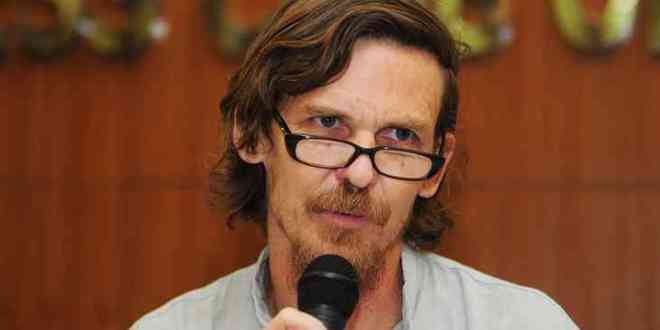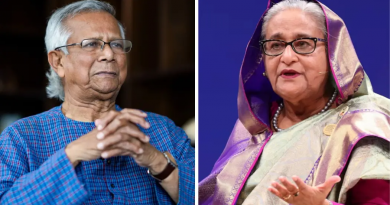Most Indians are unemployed or ‘misemployed’, says Economist Jean Drèze
by Ujjwal Krishman
Jean Drèze, the Belgian-Indian economist, true to his reputation, laces humour and an acerbic wit to reflect on the times we live in. Self deprecating, he brushes aside the question how he juggles between his roles as economist, activist and teacher. He wonders at the multi-tasking ability of Indian women instead. Nor does he mince his words in this interview with Ujjawal Krishnam.
You are said to be the people’s economist and known to be among the few who pushed for MGNREGA. What is your reaction?
I never claim to act or speak on behalf of the people, at least not on my own. If a people’s economist is someone who tries to see things from people’s point of view and take their side, you could say that I am an aspiring people’s economist. But I am a little wary of this sort of label. All kinds of things have been said and done in the name of the people.
Coming to MGNREGA, I agree that employment guarantee is a radical idea, but it was certainly not mine. This idea had already inspired Maharashtra’s Employment Guarantee Act in the 1970s. And in a way, it has also been practised in communist countries, except that it seems hard to talk of a right when employment is imposed by the state.
The Communist Manifesto itself did not talk about employment guarantee but about “equal liability of all to labour”. On the other hand, employment guarantee under MGNREGA is just the right to do unskilled labour for a subsistence wage. Ideally, employment should be dignified, satisfying, healthy, creative, well remunerated and socially useful. By that yardstick, most people in India are unemployed, or perhaps misemployed, and employment guarantee is still a distant dream.
Human rights activists who have spent their lifetime for the upliftment of the downtrodden and the oppressed are today being described by the government as threats to the nation. How do you see this tag of “Urban Naxalites”?
Accusing people who defend people’s rights of being Naxalites is an old tactic that has been used with abandon in rural India for many years. In Jharkhand, where I live, anyone who antagonises the local administration is at risk of being called a Naxalite and thrown in jail. This is a very effective way of muzzling dissent. The same tactic is now being extended to the cities. To understand this, you just need to look at the list of people who have been called Urban Naxals. It includes all kinds of people who are barely left-leaning, like Sagarika Ghose, Ramachandra Guha, Prannoy Roy, Rajdeep Sardesai, Justice S Muralidhar, Karan Thapar, Naseeruddin Shah and others. If they are Naxals, then I am the Pope.
It has been two years since Demonetisation. You were critical right from the beginning. How do you see this now?
I do believe it was a disastrous decision. And I think that the debate on Demonetisation is largely over. Nothing has been gained from Demonetisation, or at least nothing that would justify the disastrous human consequences or the risks involved in this sort of gamble. It is hard to think of any issue on which there is such wide agreement, almost a consensus, among leading economists. Those who support Demonetisation are mainly advisors or supporters of the Modi government. Obviously, they would hesitate to be critical.
How do you assess the attack on the RTI Act by the present government?
So far, the attack is not so much on the Act as on the right to information itself. Rights like this are easy for the government to undermine, since the implementation of the law depends on the government.
If the government sends signals that it is averse to any sort of public accountability, as is happening at the moment, the administration tends to act on that cue. That is why we are finding that more and more RTI applications receive evasive responses, if any. The standards of pro-active disclosure are also declining. In addition, there are more explicit attacks on the right to information, such as the depletion of the Central Information Commission, which had just three members against a sanctioned strength of 11 until very recently, when the Supreme Court cracked the whip.
But this is just a trailer. If the government has its way, the Act itself will be amended soon and the Commission will be reduced to a government poodle. So what is happening now is a two-sided attack, on the right to information as well as on the Act.
Agrarian crisis is deepening in India. How can India deal with this? How can farmers’ suicides be stopped?
I don’t think that farmers’ suicides are a good indicator of agrarian distress. According to official statistics, farmers’ suicide rates have declined significantly in the recent past, at least until 2016, the latest year for which statistics are in the public domain. Today, they are no higher than in the population as a whole, and much lower than for high risk groups like married women.
But it is hard to know what to make of this, since the causes of farmer suicides are not well understood. They are also likely to vary a great deal between different areas. Regional patterns, again, are hard to interpret, with high farmers’ suicide rates in well off states like Kerala and Maharashtra and much lower rates in the poorer states.
In my view, a more useful indicator of rural distress is the growth rate of real wages in the rural or agricultural sector. If agriculture is doing well, and productivity is increasing, you would expect real wages to rise.
Further, many small farmers are also part-time labourers, and if they are doing well, once again you would expect them to be able to secure higher wages. The growth rate of real agricultural wages has been quite low for a long time, and virtually nil in the last few years, so far as we can tell from available data.
Dealing with this requires wide ranging and sustained action to increase agricultural productivity as well as non-agricultural employment in rural areas, going well beyond the sort of short-term relief measures that tend to be discussed in the context of farmers’ suicides.
How do you see the Swaminathan Committee’s report? When will it be implemented in the true sense?
The Swaminathan Committee report is what Mark Twain would have called “a classic”, in other words a book or report that everyone cites but nobody reads.
The report is remembered mainly for the recommendation that minimum support prices should be at least 50% above the cost of production. But that was just one among many recommendations, and not the most important one by any means.
In fact, it was a passing suggestion in a paragraph concerned with the role of the Commission for Agricultural Costs and Prices. The main message of the report was the need for comprehensive support to the farm sector, for instance in the form of credit, insurance, connectivity, marketing, scientific knowledge, irrigation facilities, veterinary services, social security, human capital and more.
In most of these fields, the market mechanism is not particularly effective, and some form of public action is required. The market mechanism, of course, is even less effective in ensuring any sort of equity or sustainability in the farming sector. The Committee’s call for constructive action, in my view, is far more important than the MSP proposal, which does not particularly help to raise agricultural productivity and is of little benefit to small farmers.
To illustrate, consider Jharkhand again. There is a staggering variety of resources there that could be used to develop the rural economy for the benefit of small and marginal farmers. Instead, most farmers in Jharkhand grow much the same crops with the same techniques as they did one hundred years ago. Innovation and diversification do not happen so easily on their own, they require active promotion.
Most people can catch a fish or collect mushrooms, but making a good business of it can be quite difficult without various forms of public support. The Jharkhand government, however, is far more interested in signing dubious MoUs with Adani or Patanjali than in doing something to help small farmers. Even the supply of eggs to anganwadis has been contracted to a notoriously corrupt firm based in Tamil Nadu instead of being entrusted to local poultry farmers or self-help groups.
Academic independence and autonomy of educational institutions also seem to be under attack. As an academic, how do you react to this?
It is not exactly a diktat, as of now, but some universities have already started acting on the central government’s call for academics to be subject to the Civil Services Conduct Rules. There is nothing surprising here, it is part of the central government’s larger efforts to stifle dissent and turn us into sheep.
What is more surprising and no less disturbing is the lack of resistance to these efforts. Universities are not just coaching centres, they are also meant to contribute to intellectual creativity, cultural life, the flourishing of ideas and the defence of democratic values. Freedom of expression and association are essential for this purpose.
Few vice-chancellors or principals, however, seem to consider it important to defend these liberties. Instead, the tendency seems to be to play safe and toe the government line. Similarly, one sees little resistance to the government’s efforts to muzzle dissent in the print media and news channels. This does not augur well for the future of Indian democracy, limited as it is even today.
Amitabh Kant, CEO of NITI Aayog, and Indu Bhushan, CEO of Ayushman Bharat, glorify Pradhan Mantri Jan Arogya Yojana all the time and on all platforms. What is your assessment of this scheme?
Pradhan Mantri Jan Arogya Yojana is not a healthcare programme, it is a hospitalisation insurance programme. There is a role for hospitalisation insurance, but it has more to do with protecting people from catastrophic health expenditure than with healthcare. Even for the limited purpose of hospitalisation insurance, PMJAY is a very modest initiative, at least for now. The current budget is barely ₹2,000 crore, and the claim that it will rise to ₹10,000 crore next year is just a rumour. Even if the rumour materialises, that will be just ₹200 per person for the target population of 50 crore. If, say, 1% of the target population uses the insurance money in an average year, they will get to spend up to ₹20,000 per person. That is better than nothing, for a hospitalisation, but not much.
With the sort of budget that is being considered, PMJAY cannot go very far. Calling it the largest health scheme in the world is a joke. The joke can be better appreciated by comparing the PMJAY budget with the cost of similar programmes in countries that have serious health insurance schemes.
One instructive case is Thailand, where the Universal Coverage Scheme provides health insurance, not restricted to hospitalisation, to about 75% of the population. It costs about 100 times as much as PMJAY, in per-capita terms. Further, as Thailand’s experience illustrates once again, a hospitalisation insurance scheme is unlikely to achieve much unless the infrastructure of public health centres is radically revamped.
Failing that, people will rush to hospitals and milk the insurance cow whenever they are sick, instead of seeking primary care at the local health centre. The government’s plan to revamp primary health centres is even more inadequate than the hospitalisation insurance plan. Of course, all this could change if public expenditure on health is raised to 2.5% of GDP, as the government promises to do off and on, but that promise has been made many times over the years without making much difference.
Would you like to comment on the RBI Union government tussle, which is out in the public domain?
It is difficult to comment on this based on media reports. In confidential matters of this sort, the media tend to latch on to whatever rumours or leaks come their way. The real issues may be quite different. One of them, it seems, is the independence of the central bank, in this case the Reserve Bank of India.
This is a complicated matter. On the one hand, there is no strong economic justification for the idea that the central bank should be an independent entity committed to inflation targeting. This idea was promoted by powerful financial institutions, because they hate inflation. Inflation targeting deprives the government of an important tool of macroeconomic policy in situations where other objectives, such as growth or employment, may be just as important as low inflation. On the other hand, allowing government interference with the central bank is a slippery slope. In this case, the government seems to be trying to interfere for the wrong reasons, and this interference fits in a larger pattern of assault on independent institutions.
You wear many hats and it is astonishing how you juggle your time between these roles of an economist, a human rights activist and a teacher. How do you manage?
On the contrary, my time management leaves much to be desired. I am a very slow writer, and not very good at multitasking. When I see Indian women who handle a full-time job aside from taking care of children, and sometimes a drunken husband for good measure, I really wonder how they do it.
Article first appeared on National Herald India.



